Do you have a question about the Chevrolet 2006 Corvette and is the answer not in the manual?
Explains hazard warnings using a box and the word CAUTION for potential dangers.
Defines the circle with a slash symbol meaning 'Do Not' or 'Do Not do this'.
Notifies about potential damage to the vehicle not covered by warranty.
Explains components and labels using symbols instead of text for clarity.
Covers manual and power seat adjustments, heated seats, and seatback latches.
Discusses proper use, pretensioners, extenders, and child restraint systems.
Details older children and infants, and types of child restraint systems.
Explains airbag locations, inflation, restraint, and servicing procedures.
Covers checking and replacing restraint system parts after a crash.
Describes heated seat operation with three settings: high, low, and off.
Explains how to adjust the seatback using the reclining lever.
Warns about injury if a seatback is not locked and how to check it.
Warns about danger and reduced safety belt effectiveness when reclined.
Guidance on how to use safety belts properly and what not to do.
Warns about extreme danger of riding in cargo areas or outside the vehicle.
Explains the effectiveness of safety belts and their importance in crashes.
Explains dangers of a loose shoulder belt and proper placement.
Warns about injury from incorrect belt buckling, e.g., over abdomen.
Warns against shoulder belt behind child, causing abdominal injury.
Explains dangers of wearing shoulder belt under arm and proper placement.
Emphasizes need for appropriate restraints for infants and young children.
Warns against holding baby in arms during crash due to extreme forces.
Warns children near inflating airbags can be injured or killed.
Explains need for head/neck support for newborns and rear-facing seating.
Describes frontal and side impact airbags and their function.
Explains airbag inflation depends on impact severity, not just speed.
Describes post-inflation effects like smoke, dust, and deflated airbags.
Warns about system malfunctions if readiness light stays on.
Explains system that turns off passenger airbags based on occupant detection.
Indicator in rearview mirror showing passenger airbag status (ON/OFF).
Reiterates risks of rear-facing seats in front and need for airbags to be off.
Discusses dangers of unlocked doors for children and outsiders.
How to lock/unlock doors, hatch/trunk, and disarm theft-deterrent system.
How to open doors from inside and outside, including lost power scenarios.
Explains power lock switches and automatic locking based on shift/speed.
Warns about CO gas with open hatch, and lid release methods.
Warns about heat danger for children/pets in vehicle with closed windows.
Methods to arm the system: lock button, door lock switch, automatic arming.
Explains ignition positions and ACC mode operation.
Step-by-step guide for starting the engine using the START button.
Details shift lever positions and CAUTIONs about PARK and high-speed shifting.
How to use steering wheel paddles for manual gear selection.
Shift pattern and operating instructions for manual transmission.
Warns against skipping gears during downshifts to prevent loss of control.
How to check parking brake and transmission park mechanism holding ability.
Warns about fire risk from parking over flammable materials near hot exhaust.
System limiting wheel spin in slippery conditions.
Computer system for directional control in difficult conditions.
Allows driver full control of rear wheels while system aids directional control.
System for performance benefits like reduced impact harshness.
Using steering as an evasive action when braking is insufficient.
Advice for safe passing, including looking ahead and checking traffic signs.
Explains how skidding occurs and how to handle it.
Tips for safer night driving, including defensive driving and not drinking.
How rain affects traction, visibility, and importance of wipers/washer fluid.
Warns that wet brakes work less effectively and can cause loss of control.
How hydroplaning occurs due to water buildup under tires.
Warns about deadly CO gas from blocked exhaust pipe and clearing snow.
Advises using dealer for service and genuine GM parts.
How non-GM accessories affect performance, safety, and warranty.
Recommended octane ratings and effects of lower octane.
How to check engine oil level regularly and low oil warnings.
Procedure for changing oil and filter on Z06 models with dry sump system.
Recommends GM Standard GM4718M oil and SAE 5W-30 viscosity.
Computer system calculating oil life based on usage, not mileage.
Procedure to reset the engine oil life system after an oil change.
How to handle used oil safely and environmentally responsibly.
Location and function of the engine air cleaner/filter.
Warns that spraying water into intake can damage the engine.
How to add coolant mixture to the surge tank when the engine is cool.
Warns against turning hot pressure cap due to steam and scalding liquids.
Finding coolant temp gauge and message for overheating.
Warns about severe burns from steam and advises turning off engine immediately.
Warns plain water can boil or freeze, causing engine damage and fire.
Not necessary to check unless suspecting leak or noise.
Steps to check fluid level, cooling engine and cleaning reservoir.
Determining correct fluid and importance of using proper fluid.
Reading instructions and using fluid with freeze protection.
Master cylinder reservoir filled with DOT-3 fluid; reasons for fluid level decrease.
Warns about spilling fluid on hot engine causing fire and damage.
How to check fluid level and ensure it's between MIN/MAX marks.
Using DOT-3 fluid from sealed container and cleaning reservoir cap area.
High-pitched sound indicating worn brake pads need replacement.
Warns that worn brakes may not work well, leading to accidents.
Checking pedal height and rapid travel increase as signs of brake trouble.
Importance of using top-quality GM parts for braking system performance.
Vehicle has maintenance-free battery; recommends ACDelco® replacement.
Removing negative cable for storage over 25 days to prevent battery drain.
Warns about acid burns and gas explosion hazards from batteries.
Warns about battery acid, gas explosion, and electrical burn hazards.
Avoid pushing/pulling to start; turn off accessories during jump start.
Locating remote positive and negative terminals for jump starting.
Detailed steps for connecting red positive and black negative cables.
Steps for disconnecting jumper cables and initializing power windows.
Importance of proper engine oil level and changes, and GM Protection Plan.
How proper maintenance keeps vehicle in good condition and helps environment.
Guidance on how driving habits affect maintenance needs.
Explains when service is required based on CHANGE ENGINE OIL message.
Details services, intervals, and footnotes for Maintenance I and II.
Services required at specific mileage intervals (25k, 50k, 75k, etc.).
Detailed explanations for footnotes (a) through (l) related to maintenance items.
Owner checks and services at specified intervals for safety and performance.
Underhood checks for engine oil, coolant, and washer fluid.
Tire inspection and inflation check.
Warns about potential vehicle movement during starter switch inspection.
Warns about potential vehicle movement during inspection.
How to check parking brake and park mechanism holding ability.
Table listing fluids and lubricants by name, part number, or specification.
Continues table with usage and fluid/lubricant details.
Table listing replacement parts with GM and AC Delco part numbers.
Diagram showing engine drive belt routing for 6.0L and 7.0L engines.
How to record service dates, odometer readings, and services performed.
Continues the maintenance record log for services performed.
Steps to resolve concerns if not satisfied with dealer resolution.
Resource for GM ownership needs, email reminders, vehicle info, dealer locator.
Enrollment in Chevrolet Roadside Assistance for peace of mind.
Program offering transportation options during warranty repairs.
How vehicle computers monitor performance, airbags, and store crash data.
Importance of using qualified technicians and proper equipment for repairs.
Benefits of using genuine GM parts for appearance, durability, safety.
How to inform NHTSA about vehicle defects causing crashes or injuries.
Steps after an accident: check injuries, call 911, gather information, choose repair facility.
Details on information to collect from other driver and insurance.
Selecting a reputable facility and understanding estimates.
How to order service manuals and other publications.
Explains hazard warnings using a box and the word CAUTION for potential dangers.
Defines the circle with a slash symbol meaning 'Do Not' or 'Do Not do this'.
Notifies about potential damage to the vehicle not covered by warranty.
Explains components and labels using symbols instead of text for clarity.
Covers manual and power seat adjustments, heated seats, and seatback latches.
Discusses proper use, pretensioners, extenders, and child restraint systems.
Details older children and infants, and types of child restraint systems.
Explains airbag locations, inflation, restraint, and servicing procedures.
Covers checking and replacing restraint system parts after a crash.
Describes heated seat operation with three settings: high, low, and off.
Explains how to adjust the seatback using the reclining lever.
Warns about injury if a seatback is not locked and how to check it.
Warns about danger and reduced safety belt effectiveness when reclined.
Guidance on how to use safety belts properly and what not to do.
Warns about extreme danger of riding in cargo areas or outside the vehicle.
Explains the effectiveness of safety belts and their importance in crashes.
Explains dangers of a loose shoulder belt and proper placement.
Warns about injury from incorrect belt buckling, e.g., over abdomen.
Warns against shoulder belt behind child, causing abdominal injury.
Explains dangers of wearing shoulder belt under arm and proper placement.
Emphasizes need for appropriate restraints for infants and young children.
Warns against holding baby in arms during crash due to extreme forces.
Warns children near inflating airbags can be injured or killed.
Explains need for head/neck support for newborns and rear-facing seating.
Describes frontal and side impact airbags and their function.
Explains airbag inflation depends on impact severity, not just speed.
Describes post-inflation effects like smoke, dust, and deflated airbags.
Warns about system malfunctions if readiness light stays on.
Explains system that turns off passenger airbags based on occupant detection.
Indicator in rearview mirror showing passenger airbag status (ON/OFF).
Reiterates risks of rear-facing seats in front and need for airbags to be off.
Discusses dangers of unlocked doors for children and outsiders.
How to lock/unlock doors, hatch/trunk, and disarm theft-deterrent system.
How to open doors from inside and outside, including lost power scenarios.
Explains power lock switches and automatic locking based on shift/speed.
Warns about CO gas with open hatch, and lid release methods.
Warns about heat danger for children/pets in vehicle with closed windows.
Methods to arm the system: lock button, door lock switch, automatic arming.
Explains ignition positions and ACC mode operation.
Step-by-step guide for starting the engine using the START button.
Details shift lever positions and CAUTIONs about PARK and high-speed shifting.
How to use steering wheel paddles for manual gear selection.
Shift pattern and operating instructions for manual transmission.
Warns against skipping gears during downshifts to prevent loss of control.
How to check parking brake and transmission park mechanism holding ability.
Warns about fire risk from parking over flammable materials near hot exhaust.
System limiting wheel spin in slippery conditions.
Computer system for directional control in difficult conditions.
Allows driver full control of rear wheels while system aids directional control.
System for performance benefits like reduced impact harshness.
Using steering as an evasive action when braking is insufficient.
Advice for safe passing, including looking ahead and checking traffic signs.
Explains how skidding occurs and how to handle it.
Tips for safer night driving, including defensive driving and not drinking.
How rain affects traction, visibility, and importance of wipers/washer fluid.
Warns that wet brakes work less effectively and can cause loss of control.
How hydroplaning occurs due to water buildup under tires.
Warns about deadly CO gas from blocked exhaust pipe and clearing snow.
Advises using dealer for service and genuine GM parts.
How non-GM accessories affect performance, safety, and warranty.
Recommended octane ratings and effects of lower octane.
How to check engine oil level regularly and low oil warnings.
Procedure for changing oil and filter on Z06 models with dry sump system.
Recommends GM Standard GM4718M oil and SAE 5W-30 viscosity.
Computer system calculating oil life based on usage, not mileage.
Procedure to reset the engine oil life system after an oil change.
How to handle used oil safely and environmentally responsibly.
Location and function of the engine air cleaner/filter.
Warns that spraying water into intake can damage the engine.
How to add coolant mixture to the surge tank when the engine is cool.
Warns against turning hot pressure cap due to steam and scalding liquids.
Finding coolant temp gauge and message for overheating.
Warns about severe burns from steam and advises turning off engine immediately.
Warns plain water can boil or freeze, causing engine damage and fire.
Not necessary to check unless suspecting leak or noise.
Steps to check fluid level, cooling engine and cleaning reservoir.
Determining correct fluid and importance of using proper fluid.
Reading instructions and using fluid with freeze protection.
Master cylinder reservoir filled with DOT-3 fluid; reasons for fluid level decrease.
Warns about spilling fluid on hot engine causing fire and damage.
How to check fluid level and ensure it's between MIN/MAX marks.
Using DOT-3 fluid from sealed container and cleaning reservoir cap area.
High-pitched sound indicating worn brake pads need replacement.
Warns that worn brakes may not work well, leading to accidents.
Checking pedal height and rapid travel increase as signs of brake trouble.
Importance of using top-quality GM parts for braking system performance.
Vehicle has maintenance-free battery; recommends ACDelco® replacement.
Removing negative cable for storage over 25 days to prevent battery drain.
Warns about acid burns and gas explosion hazards from batteries.
Warns about battery acid, gas explosion, and electrical burn hazards.
Avoid pushing/pulling to start; turn off accessories during jump start.
Locating remote positive and negative terminals for jump starting.
Detailed steps for connecting red positive and black negative cables.
Steps for disconnecting jumper cables and initializing power windows.
Importance of proper engine oil level and changes, and GM Protection Plan.
How proper maintenance keeps vehicle in good condition and helps environment.
Guidance on how driving habits affect maintenance needs.
Explains when service is required based on CHANGE ENGINE OIL message.
Details services, intervals, and footnotes for Maintenance I and II.
Services required at specific mileage intervals (25k, 50k, 75k, etc.).
Detailed explanations for footnotes (a) through (l) related to maintenance items.
Owner checks and services at specified intervals for safety and performance.
Underhood checks for engine oil, coolant, and washer fluid.
Tire inspection and inflation check.
Warns about potential vehicle movement during starter switch inspection.
Warns about potential vehicle movement during inspection.
How to check parking brake and park mechanism holding ability.
Table listing fluids and lubricants by name, part number, or specification.
Continues table with usage and fluid/lubricant details.
Table listing replacement parts with GM and AC Delco part numbers.
Diagram showing engine drive belt routing for 6.0L and 7.0L engines.
How to record service dates, odometer readings, and services performed.
Continues the maintenance record log for services performed.
Steps to resolve concerns if not satisfied with dealer resolution.
Resource for GM ownership needs, email reminders, vehicle info, dealer locator.
Enrollment in Chevrolet Roadside Assistance for peace of mind.
Program offering transportation options during warranty repairs.
How vehicle computers monitor performance, airbags, and store crash data.
Importance of using qualified technicians and proper equipment for repairs.
Benefits of using genuine GM parts for appearance, durability, safety.
How to inform NHTSA about vehicle defects causing crashes or injuries.
Steps after an accident: check injuries, call 911, gather information, choose repair facility.
Details on information to collect from other driver and insurance.
Selecting a reputable facility and understanding estimates.
How to order service manuals and other publications.
| Brand | Chevrolet |
|---|---|
| Model | 2006 Corvette |
| Category | Automobile |
| Language | English |
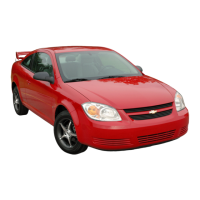
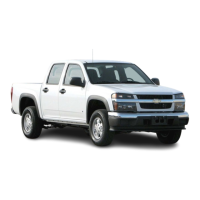
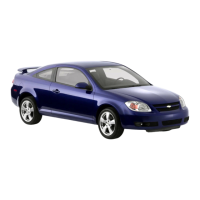
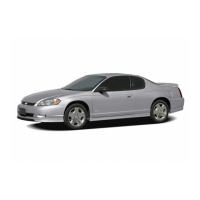
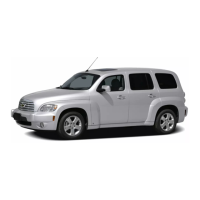
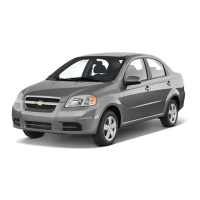
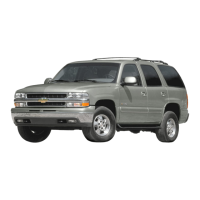

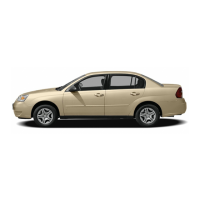



